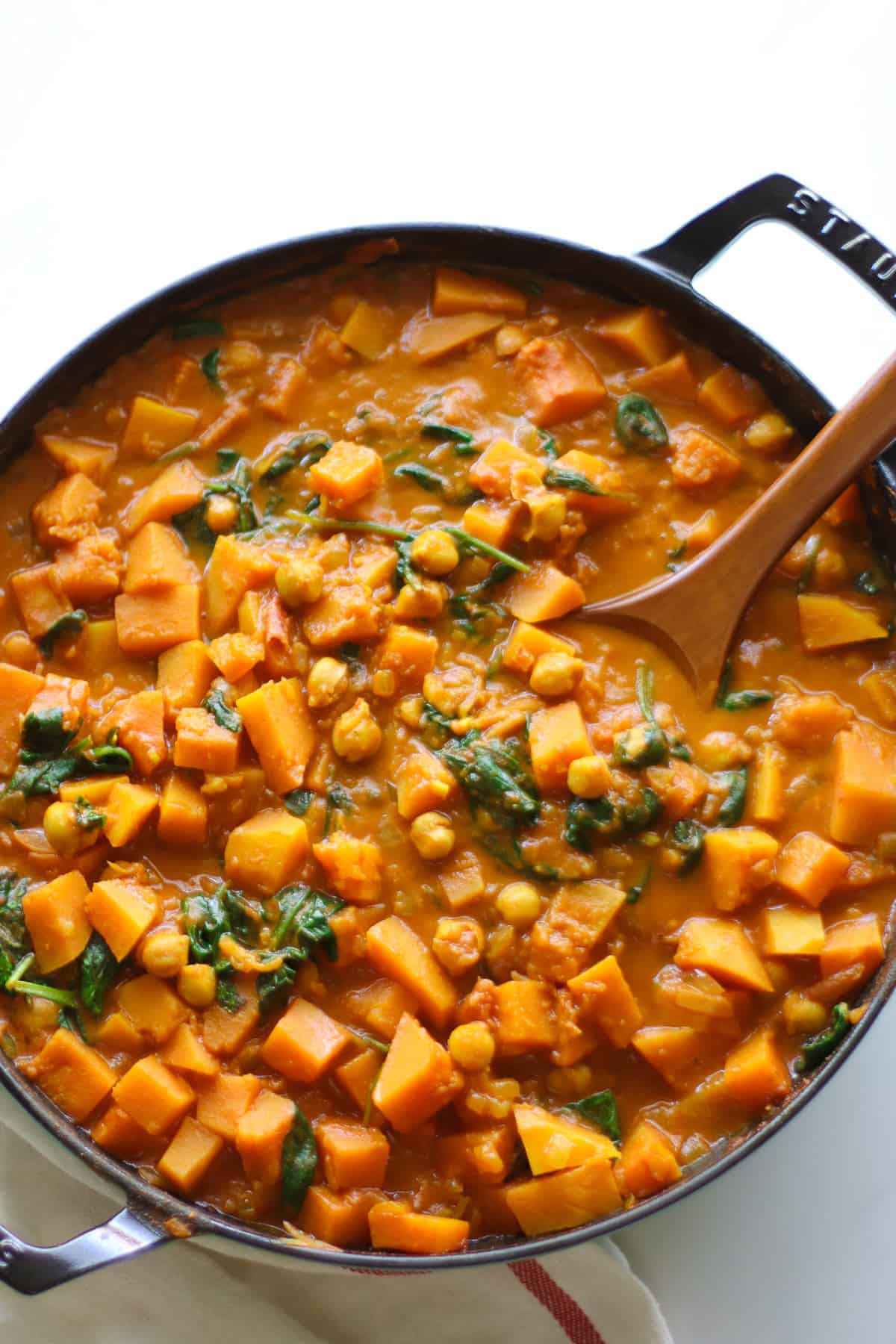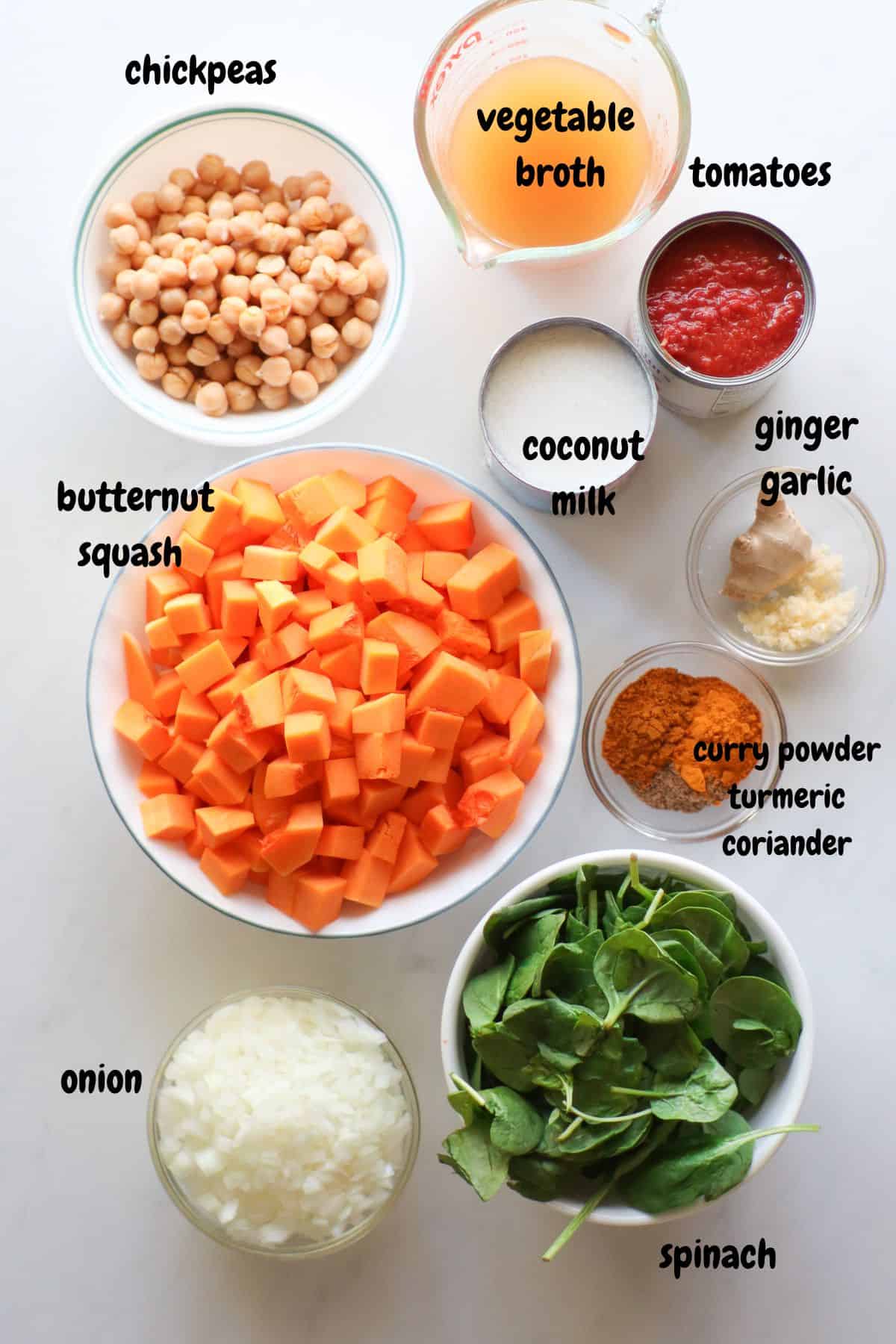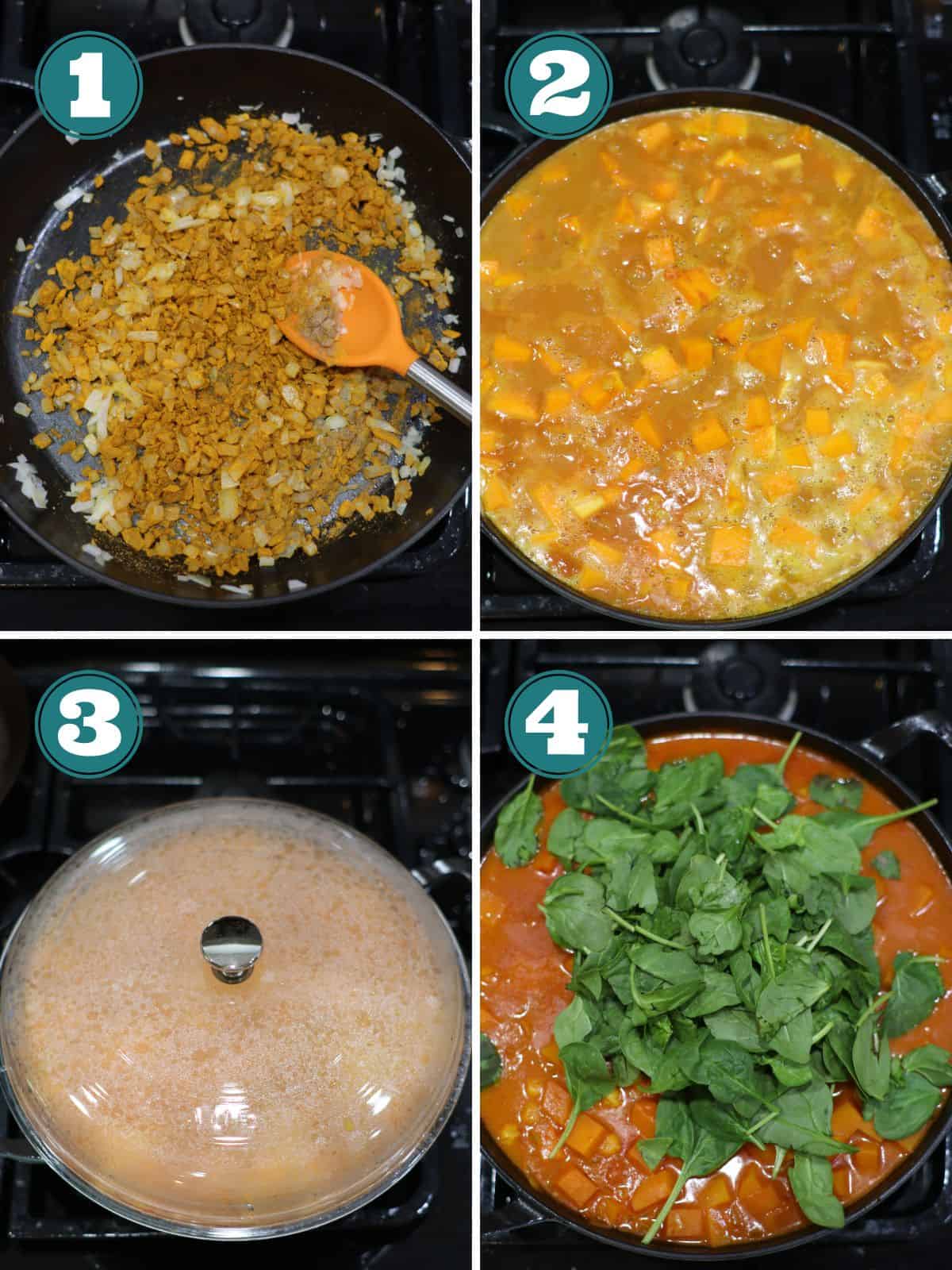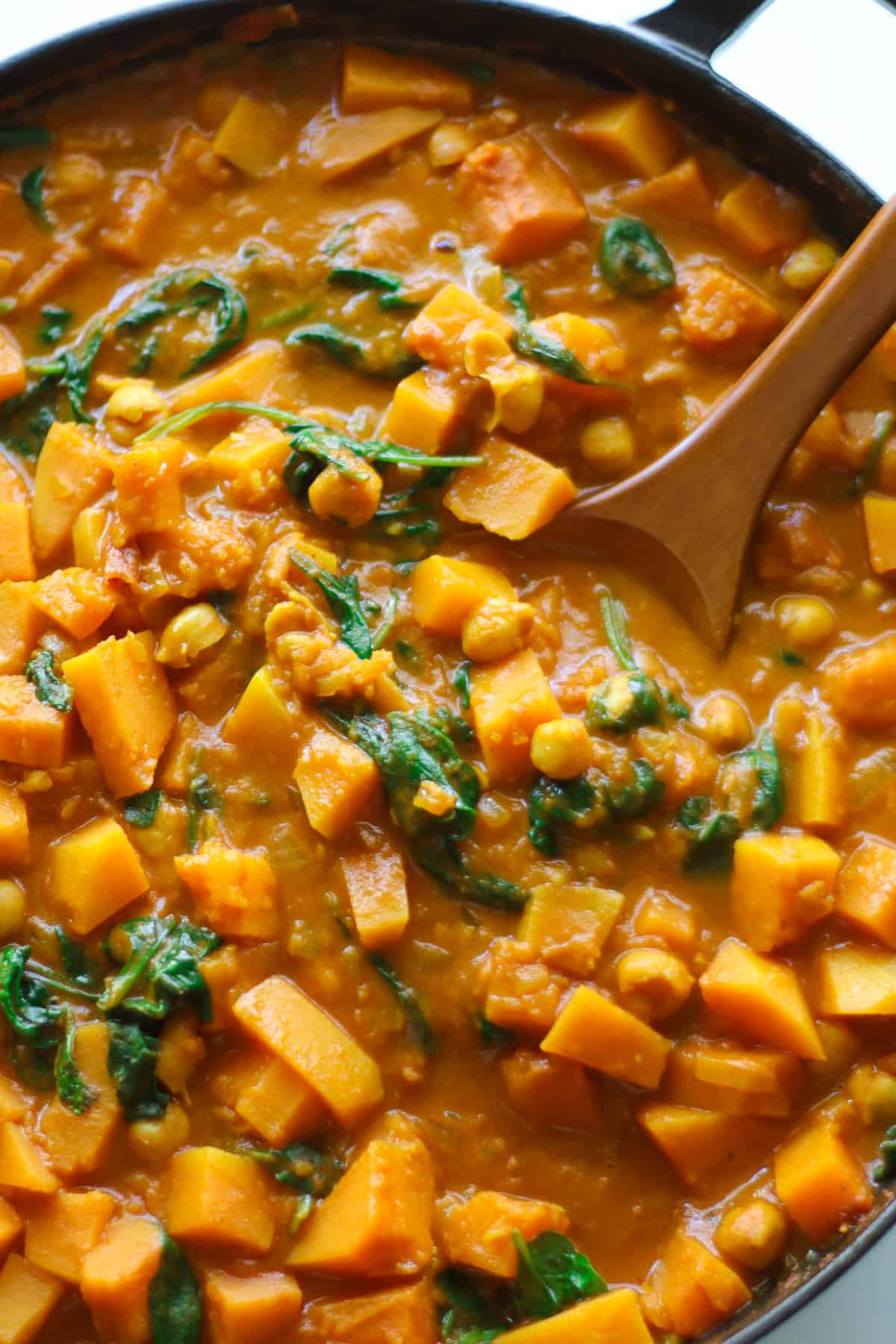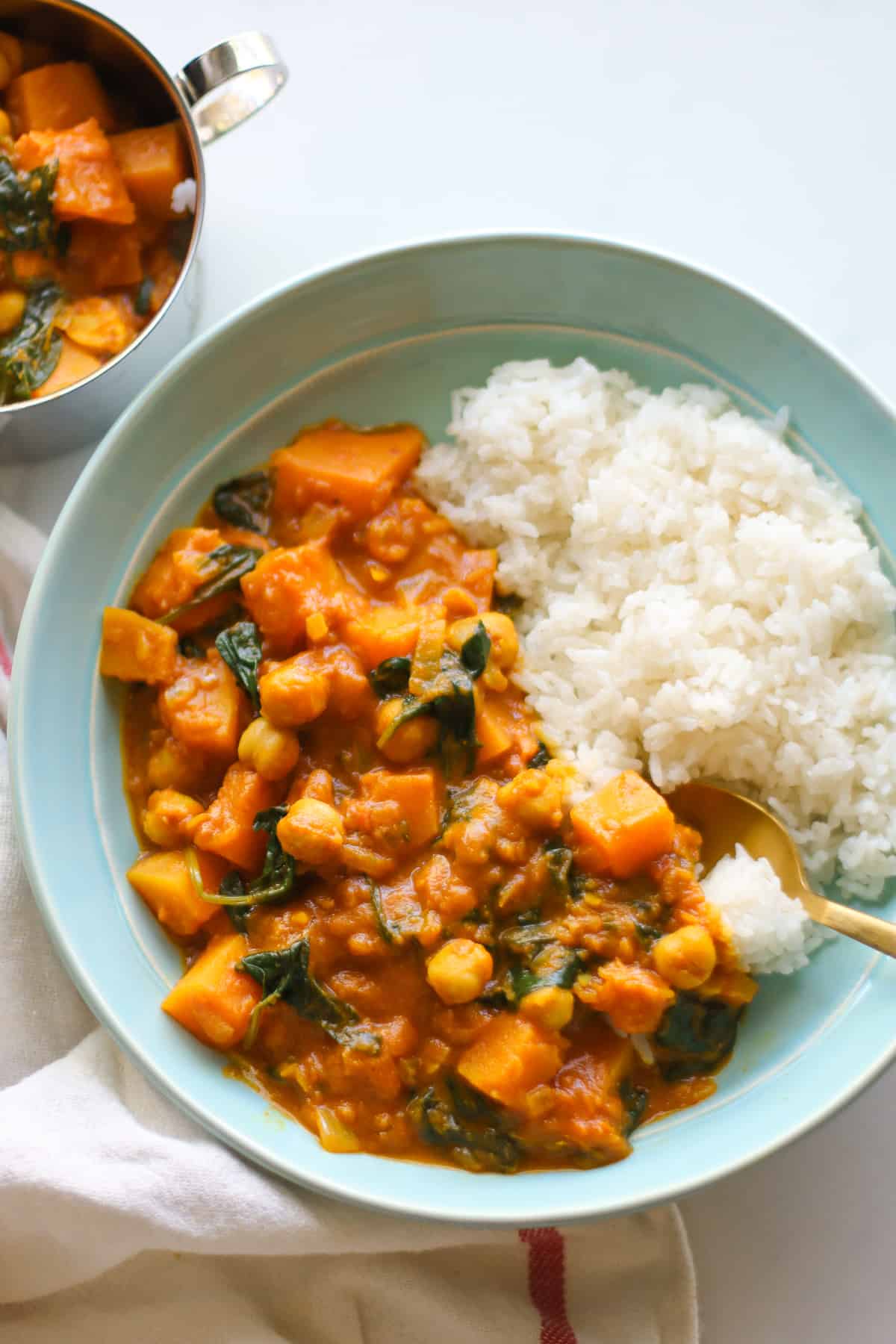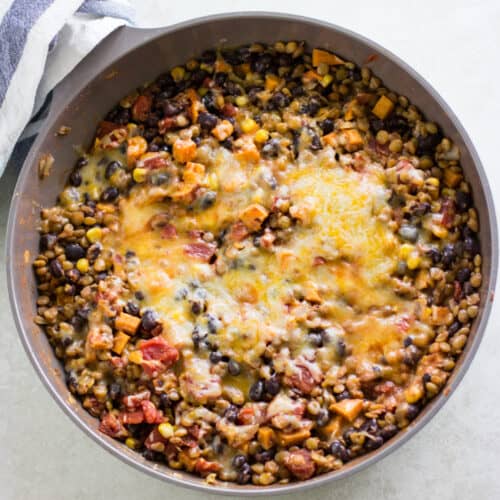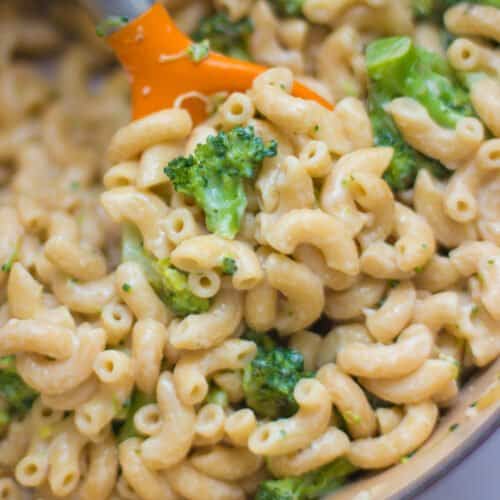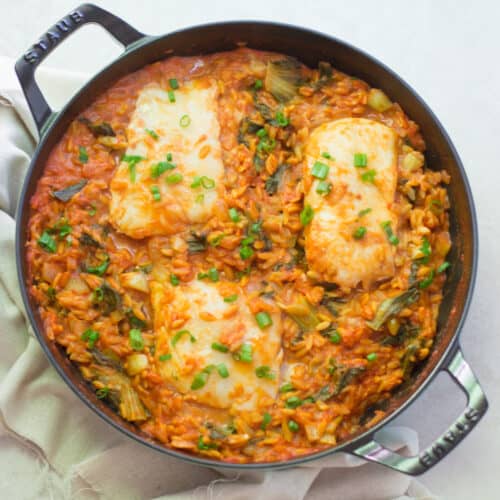Butternut Squash Curry Recipe
It’s fall and my counter is currently full with all kinds of winter squash. I have pumpkin, spaghetti squash, red kuri, and butternut squash, today’s star ingredient. Butternut squash is one of the most versatile ingredients! You can cook and enjoy as is or add to all kinds of dishes like pancakes, sauces, meatballs. You can even use it interchangeably in recipes that call for sweet potato or pumpkin. Today, this delightful ingredient gets cooked in a creamy coconut curry sauce until tender. If you are in need of some comfort, cozy up with a warm bowl of this luscious and flavorful butternut squash chickpea curry! It will not disappoint. And if you want to add more protein, you must try this turkey curry! Want to add a tropical flair? This mango chicken curry is sure to become a new family favorite.
Ingredients
I am highlighting just the ones that need further explanation. The full recipe is in the recipe card below.
Butternut Squash – Choose one that weighs about 2-2.5 pounds. It will yield about 4-5 cups cubed. I’ve learned that the smaller the size, the more flavorful the flesh. This applies to all winter squash. Curry powder – This is a spice blend that consists of turmeric, cumin, ginger, and cinnamon. Note that this is different from garam masala which doesn’t contain turmeric powder and therefore is reddish-brown in color. Chickpeas (garbanzo beans) – added for extra creaminess and a boost of protein and iron. You can also use cannellini or great northern beans. Coconut milk: MUST use unsweetened FULL FAT coconut milk that comes in a can not carton, which is much more diluted and oftentimes contain sugar. Note that this is also different from coconut cream. You really want to use a good one without any emulsifiers and stabilizers. I’ve found that Arroy-D and Chaokoh work best for curries. Low-sodium vegetable broth – you can also use chicken broth if you prefer.
How to Cut Butternut Squash
Cut off both ends and peel the skin using a sharp peeler Stand it upright on a cutting board (tip: place a wet paper towel underneath so it doesn’t move) and cut in half down the middle from top to bottom. Remove the seeds and stringy insides with a spoon. Cut into slices, lengthwise, then into 1/2 inch cubes. Try to cut them roughly the same size to ensure even cooking.
Step-by-Step Instructions
Variations
Craving a Thai butternut squash curry? You can replace the curry powder, turmeric, and coriander with Thai red curry paste. But do note that the flavor profile will be completely different. It will be spicier, so start with just 1 tablespoon and adjust depending on your preferred spice level. No butternut squash? You can use sweet potatoes, red kuri, or kabocha! No chickpeas? You can add any white beans, like cannellini or great northern beans, or swap with another protein source, like tofu, chicken, or shrimp.
Tips for Success
Preparing the butternut squash is what takes the longest. You can prep ahead of time or use cubed butternut squash from the store. The sauce will thicken more as it sits and once refrigerated. If desired, feel free to add more water, broth, or full-fat coconut milk (don’t use light coconut milk) to thin it out.
Serving Suggestions
This is seriously the perfect weeknight dinner! Enjoy the creamy curry sauce with some rice (like jasmine rice), quinoa, or red lentils (for some extra protein and iron). Any cooked grain will pair beautifully and noodles or pasta, even, like this Thai curry pasta! You can even mop up this rich curry with pita or naan. Want some brightness? Top with some fresh herbs, like cilantro or parsley, and a squeeze of fresh lime or lemon juice.
Storage Suggestions
Just like with most one pot meals, this curry will taste even better the next day as the flavors get a chance to meld together. Transfer leftovers into an airtight container and store in the refrigerator for up to 5 days. You can also freeze for up to 3 months.
More One Pot Comfort Meals

